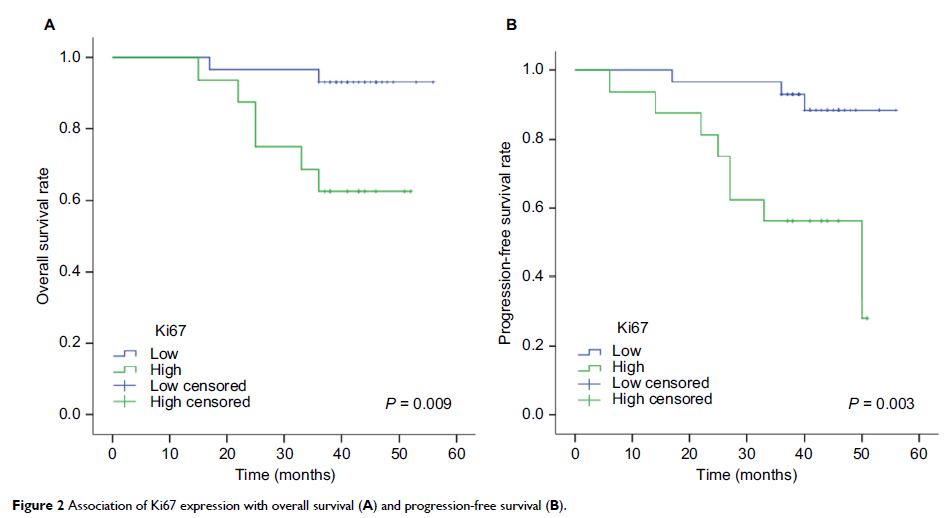108384
论文已发表
注册即可获取德孚的最新动态
IF 收录期刊
- 3.4 Breast Cancer (Dove Med Press)
- 3.2 Clin Epidemiol
- 2.6 Cancer Manag Res
- 2.9 Infect Drug Resist
- 3.7 Clin Interv Aging
- 5.1 Drug Des Dev Ther
- 3.1 Int J Chronic Obstr
- 6.6 Int J Nanomed
- 2.6 Int J Women's Health
- 2.9 Neuropsych Dis Treat
- 2.8 OncoTargets Ther
- 2.0 Patient Prefer Adher
- 2.2 Ther Clin Risk Manag
- 2.5 J Pain Res
- 3.0 Diabet Metab Synd Ob
- 3.2 Psychol Res Behav Ma
- 3.4 Nat Sci Sleep
- 1.8 Pharmgenomics Pers Med
- 2.0 Risk Manag Healthc Policy
- 4.1 J Inflamm Res
- 2.0 Int J Gen Med
- 3.4 J Hepatocell Carcinoma
- 3.0 J Asthma Allergy
- 2.2 Clin Cosmet Investig Dermatol
- 2.4 J Multidiscip Healthc

鼻咽癌中 Ki67 表达和中性粒细胞 - 淋巴细胞比率的预后意义
Authors Zhao L, Chen H, Hu B, Zhang H, Lin Q
Received 8 March 2018
Accepted for publication 30 April 2018
Published 5 July 2018 Volume 2018:10 Pages 1919—1926
DOI https://doi.org/10.2147/CMAR.S167626
Checked for plagiarism Yes
Review by Single-blind
Peer reviewers approved by Dr Cristina Weinberg
Peer reviewer comments 3
Editor who approved publication: Dr Antonella D'Anneo
Purpose: To investigate the association of pretreatment Ki67 expression and
the derived neutrophil–lymphocyte ratio (dNLR) with clinical outcomes in
nasopharyngeal carcinoma (NPC).
Patients and
methods: For the study, 46 patients diagnosed
with NPC at our hospital were recruited between April 2013 and December 2015.
All patients were histologically confirmed to have non-keratinizing
undifferentiated NPC. The expression of Ki67 proteins in NPC tissue was analyzed
immunohistochemically, and the dNLR was assessed in the peripheral blood, both
before treatment. Stage I and II disease was treated with radiotherapy with or
without concurrent chemotherapy, and stage III and IV disease was treated with
cisplatin-based radiochemotherapy and neoadjuvant chemotherapy regimens.
Results: Forty-five of the 46 patients met the criteria, and the median
follow-up period was 41 months (15–56 months). The cutoff values for Ki67 and
dNLR were 77.5% and 2.01%, respectively. The 3-year overall survival (OS) and
progression-free survival rates in the high versus low Ki67 expression groups
were 62.5% vs. 93.1% (P = 0.009) and
56.3% vs. 93.1% (P = 0.003), respectively. The
3-year OS rate of patients with high dNLR vs. low dNLR was 64.3% vs. 90.3% (P = 0.023). In the Cox risk
ratio model, Ki67 expression and dNLR were independent prognostic factors for
OS. Patients were then divided into three groups based on Ki67 expression and
dNLR (high risk, both factors were high; intermediate risk, one factor was
high; and low risk, neither factor was high). The 3-year OS rates were 20%,
85%, and 95% for the high, intermediate, and low risk groups, respectively (P < 0.001).
Conclusion: Pretreatment Ki67 and dNLR levels can be used as independent prognostic
markers in NPC, and elevated values are associated with poor prognosis.
Concurrently, high Ki67 expression and dNLR predict a significantly adverse
outcome.
Keywords: nasopharyngeal carcinoma, Ki67, dNLR, prognosis
